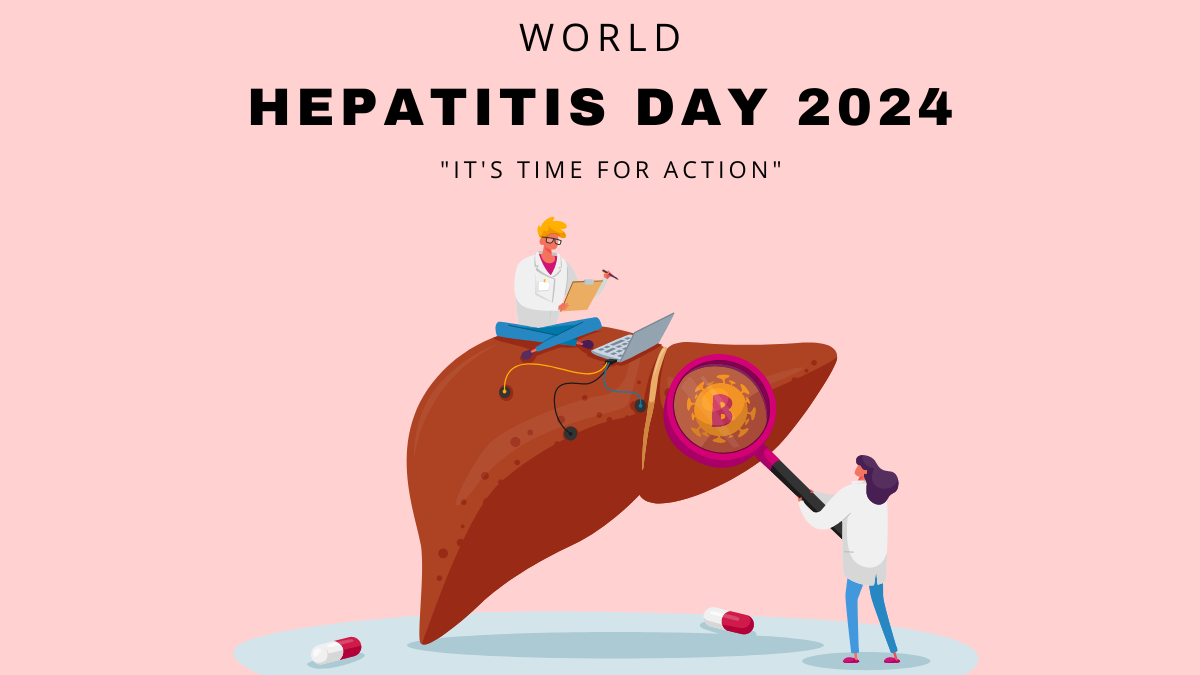World Hepatitis Day, observed annually on July 28th, serves as a global platform to raise awareness about viral hepatitis, a group of infectious diseases that cause inflammation of the liver and can lead to severe liver disease and cancer. As we approach the 2024 commemoration, the urgency of addressing this global health challenge has never been more pressing.
Theme for 2024: “It’s Time for Action”
The theme for World Hepatitis Day 2024, “It’s Time for Action,” encapsulates the critical need for immediate and decisive steps to combat hepatitis worldwide. This call to action is underscored by the alarming statistic that a person dies every 30 seconds from a hepatitis-related illness. The global health community is rallying to accelerate efforts in prevention, diagnosis, and treatment to save lives and improve health outcomes.
Understanding Hepatitis: A Complex Health Challenge
What is Hepatitis?
Hepatitis is an inflammation of the liver, often caused by viral infections but also resulting from other factors such as alcohol consumption, certain medications, and autoimmune diseases. The liver, a vital organ responsible for numerous essential functions, becomes compromised when affected by hepatitis, leading to potentially severe health consequences.
The Five Main Strains
There are five main strains of the hepatitis virus, each with distinct characteristics:
- Hepatitis A
- Hepatitis B
- Hepatitis C
- Hepatitis D
- Hepatitis E
Among these, hepatitis B and C are the most common and have the most significant impact on global health. Together, these two strains result in an astounding 1.3 million deaths and 2.2 million new infections per year.
The Global Impact and the Path to Elimination
Despite advancements in diagnostic tools and treatment options, as well as decreasing product prices, the coverage rates for testing and treatment have stagnated. However, the World Health Organization (WHO) maintains that reaching the elimination goal by 2030 is still achievable if swift and coordinated action is taken now.
Strategies for Prevention and Control
To combat the spread of hepatitis and work towards its elimination, a multifaceted approach is necessary. Here are detailed strategies that individuals and communities can adopt:
1. Vaccination
Effective vaccines are available for Hepatitis A and B. Vaccination stimulates the immune system to produce antibodies against the virus without causing the disease, providing a powerful preventive measure.
2. Safe Injection Practices
Avoiding the sharing of needles and ensuring the use of new, sterile needles for injections is crucial in preventing the transmission of blood-borne hepatitis viruses, particularly hepatitis B and C.
3. Blood Screening
Rigorous testing of donated blood for hepatitis viruses significantly reduces the risk of transmission through blood transfusions, a critical measure in healthcare settings.
4. Safe Sexual Practices
The use of protection during sexual activities reduces the risk of transmission through sexual contact by preventing direct contact with infected bodily fluids.
5. Hygienic Food and Water Practices
Proper cleaning and cooking of food, along with access to clean drinking water, are essential in reducing the risk of hepatitis A and E, which spread through contaminated food and water sources.
6. Hand Hygiene
Regular and thorough hand washing, especially before eating and after using the toilet, is a simple yet effective way to remove potential contaminants that can cause hepatitis A and E.
7. Personal Item Safety
Avoiding the sharing of personal items such as razors, toothbrushes, or nail clippers prevents transmission through small amounts of blood that may be present on these items.
8. Safe Tattoo and Piercing Practices
Ensuring that tattoo and piercing instruments are properly sterilized and that only sterile equipment is used can prevent blood-borne transmission of hepatitis B and C.
9. Hepatitis B Immunoglobulin
This specialized treatment provides immediate, short-term protection against hepatitis B and is particularly important for infants born to hepatitis B-infected mothers and individuals after exposure.
10. Education and Awareness
Public health campaigns play a crucial role in informing the public about hepatitis, its modes of transmission, and prevention strategies. This knowledge empowers individuals to make informed decisions and adopt behaviors that reduce the risk of transmission.
The Role of Healthcare Systems and Policy
Improving diagnostics with point-of-care viral load testing, identifying hepatitis D through established testing protocols, and providing high-quality services are essential components of a comprehensive approach to hepatitis control. These measures require strong healthcare systems and supportive policies at national and international levels.




 World Basketball Day 2025 Celebrates Bas...
World Basketball Day 2025 Celebrates Bas...
 UN Celebrates Second World Meditation Da...
UN Celebrates Second World Meditation Da...
 Winter Solstice 2025 Observed on Sunday,...
Winter Solstice 2025 Observed on Sunday,...







